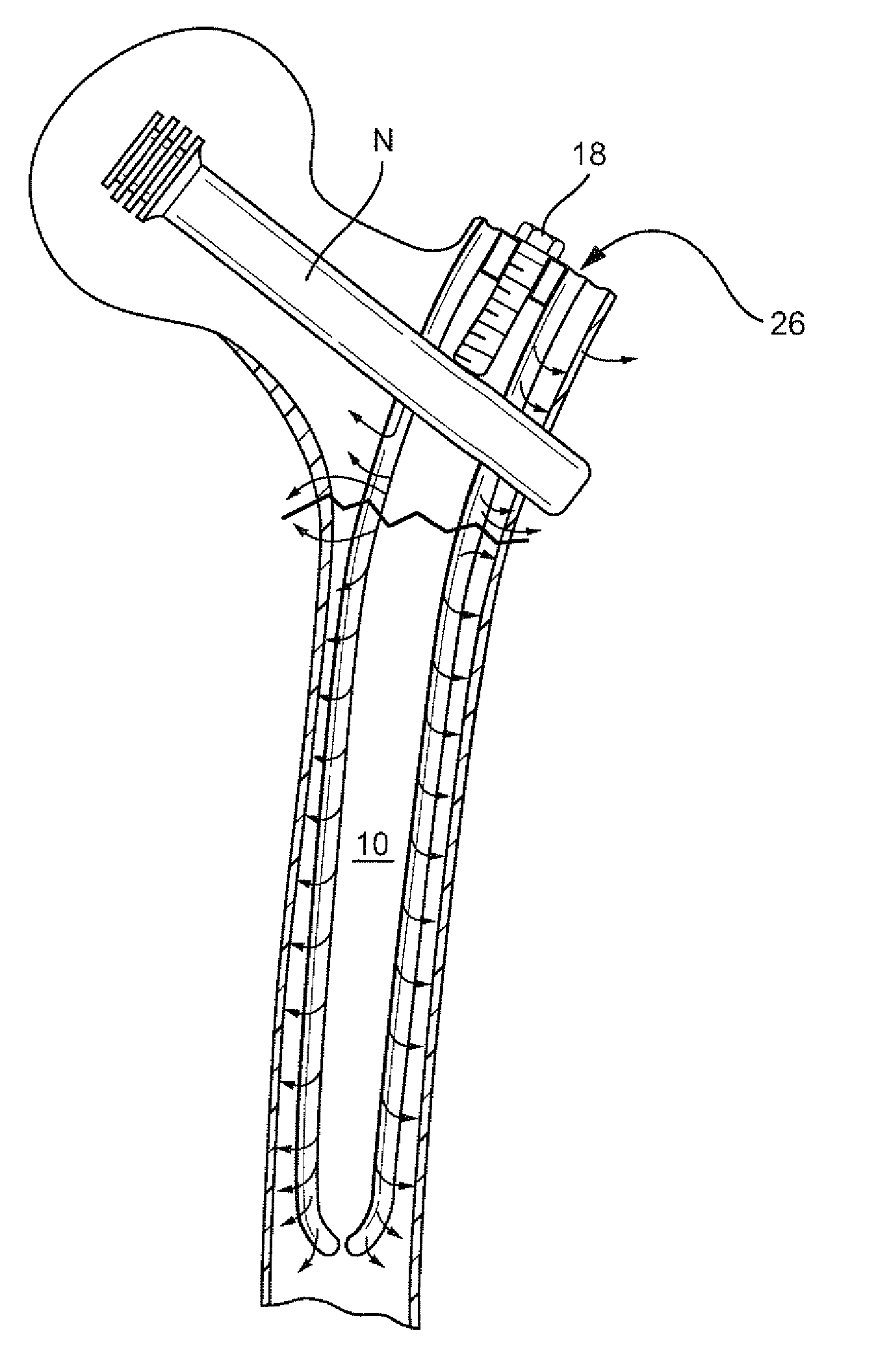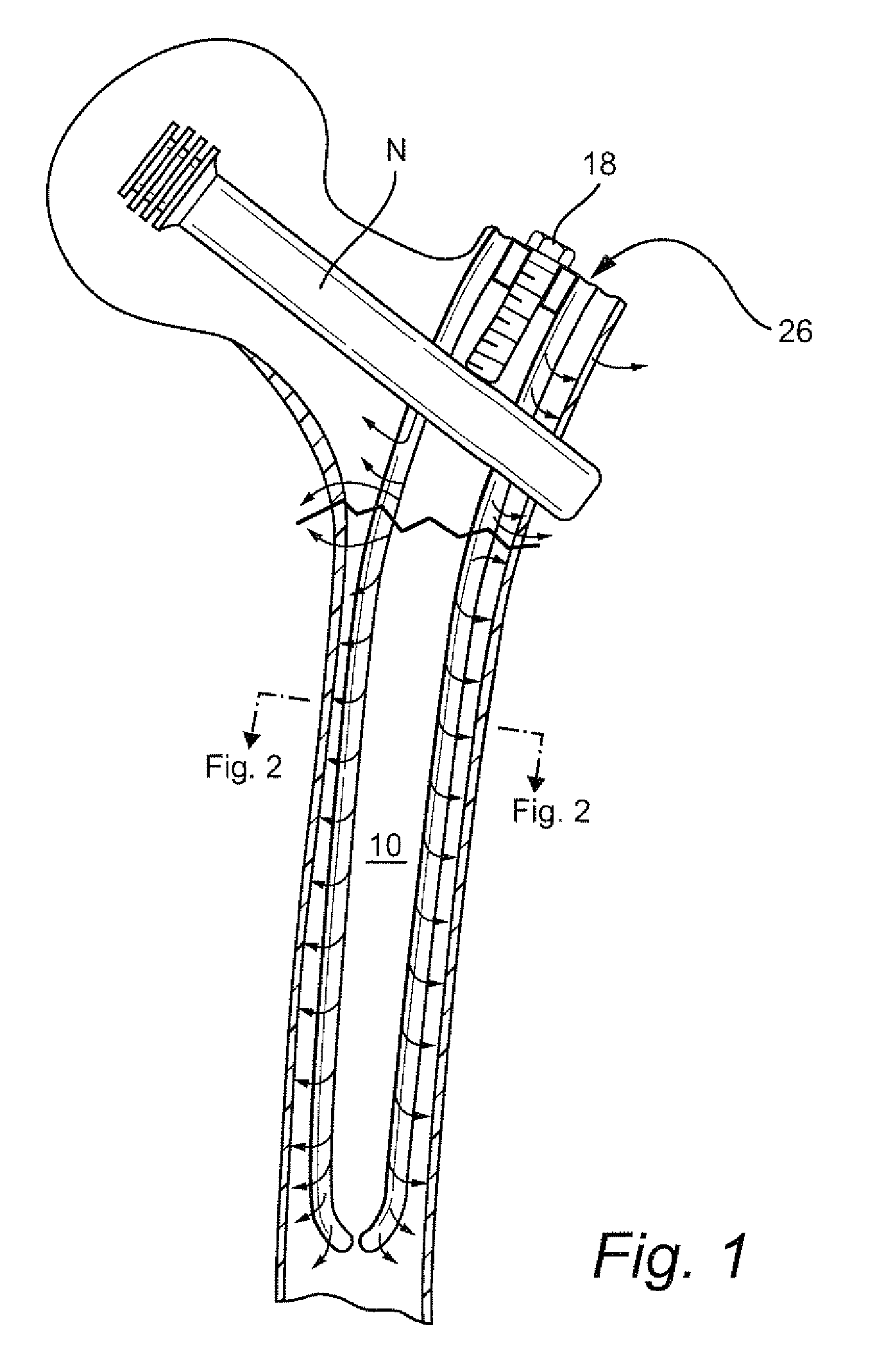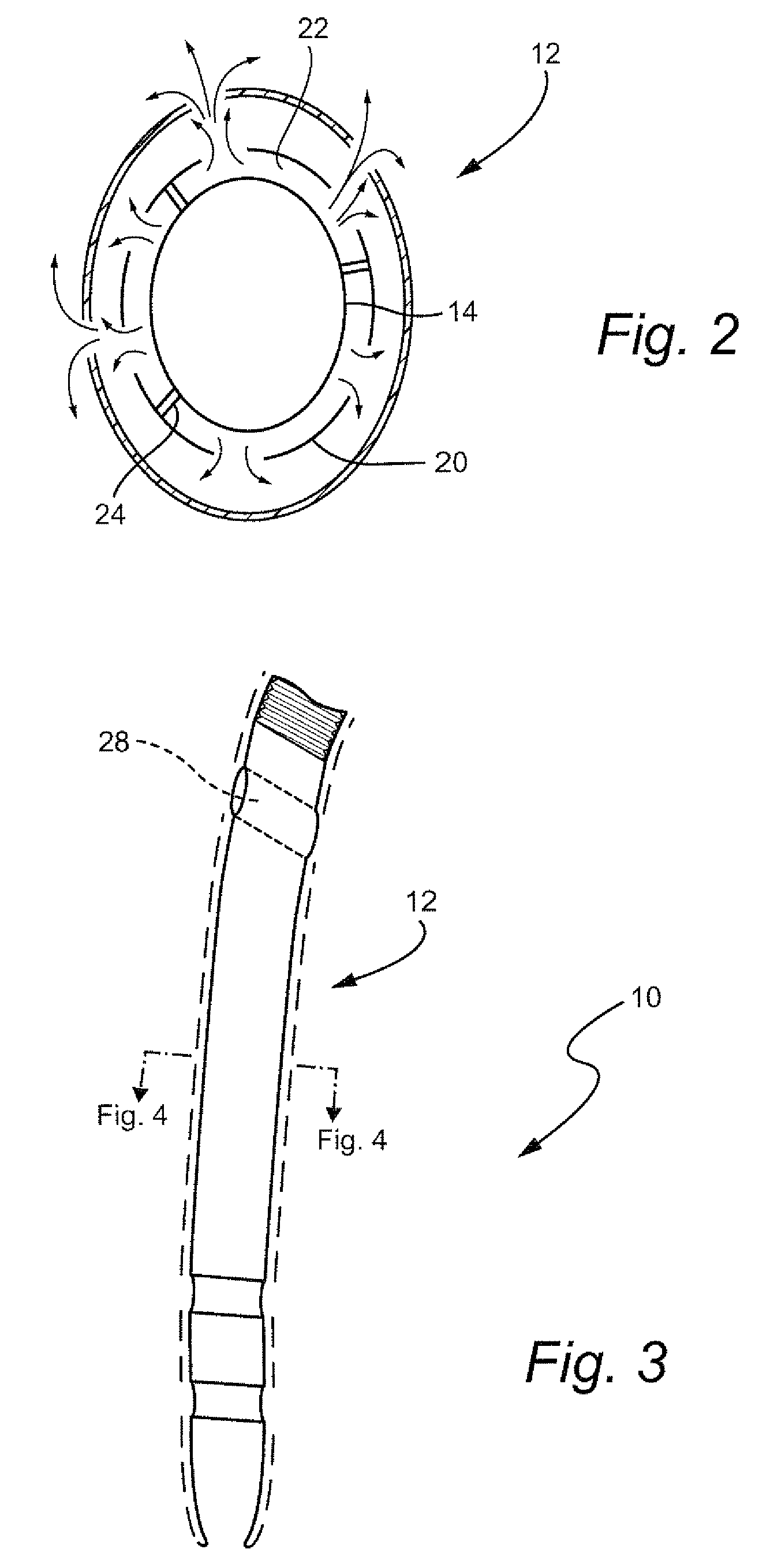Biologic intramedullary fixation device and methods of use
a technology of fixation device and intramedullary, which is applied in the field of biological intramedullary fixation device and methods of use, can solve the problems of not making serious attempts to fix larger bones such as the femur, tibia, humerus, etc., and achieves the effect of reducing the risk of fractur
- Summary
- Abstract
- Description
- Claims
- Application Information
AI Technical Summary
Benefits of technology
Problems solved by technology
Method used
Image
Examples
Embodiment Construction
[0026]With reference to FIGS. 1-4, the biologic intramedullary fracture fixation device 10 is shown in an exemplary application for proximal (subtrochanteric) femoral fracture repair. As noted above, the fixation device described herein is suitable for fractures of all long bones. The device 10 includes an intramedullary rod 12 that is formed of a bioabsorbable synthetic material such as Polyglycolic acid or High Molecular Weight Polylactide polymers or a combination thereof. When combined with a cement material, the bioabsorbable synthetic material has a modulus of elasticity that is better than the native bone.
[0027]As shown in FIGS. 2 and 4, the rod 12 includes an internal tubular wall 14 that defines an internal cavity 16. The internal tubular wall 14 may be provided with or without minimal fenestration at the site the fracture to permit extrusion of the cement centrally. A proximal end of the internal wall 14 is preferably sealed with a set screw 18 that stabilizes an interlock...
PUM
 Login to View More
Login to View More Abstract
Description
Claims
Application Information
 Login to View More
Login to View More - R&D
- Intellectual Property
- Life Sciences
- Materials
- Tech Scout
- Unparalleled Data Quality
- Higher Quality Content
- 60% Fewer Hallucinations
Browse by: Latest US Patents, China's latest patents, Technical Efficacy Thesaurus, Application Domain, Technology Topic, Popular Technical Reports.
© 2025 PatSnap. All rights reserved.Legal|Privacy policy|Modern Slavery Act Transparency Statement|Sitemap|About US| Contact US: help@patsnap.com



